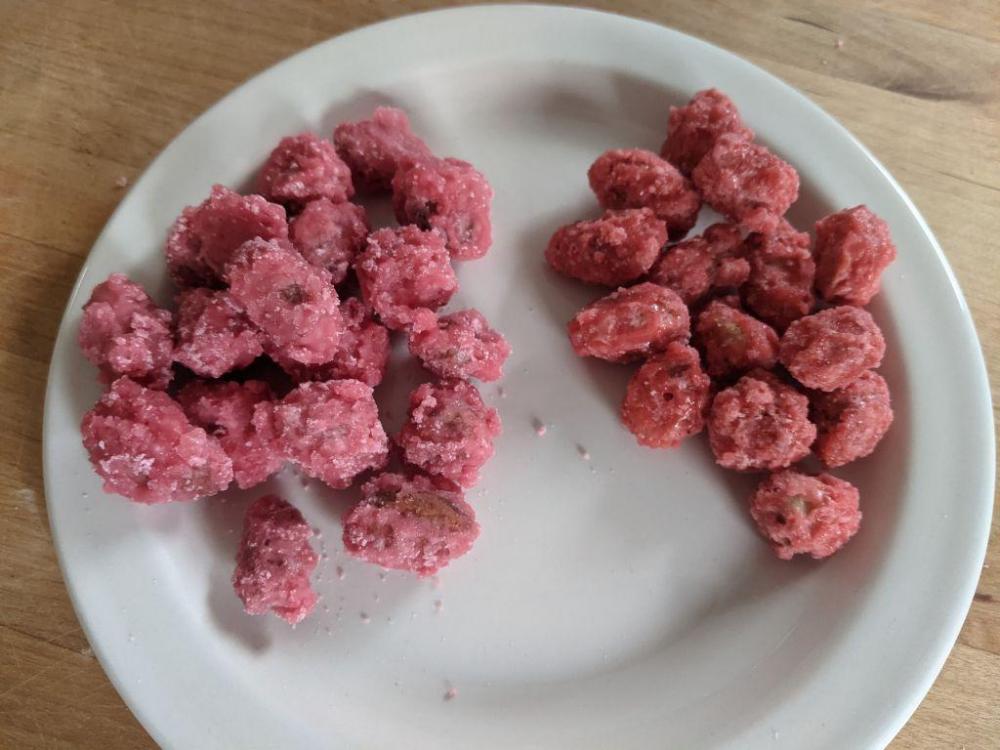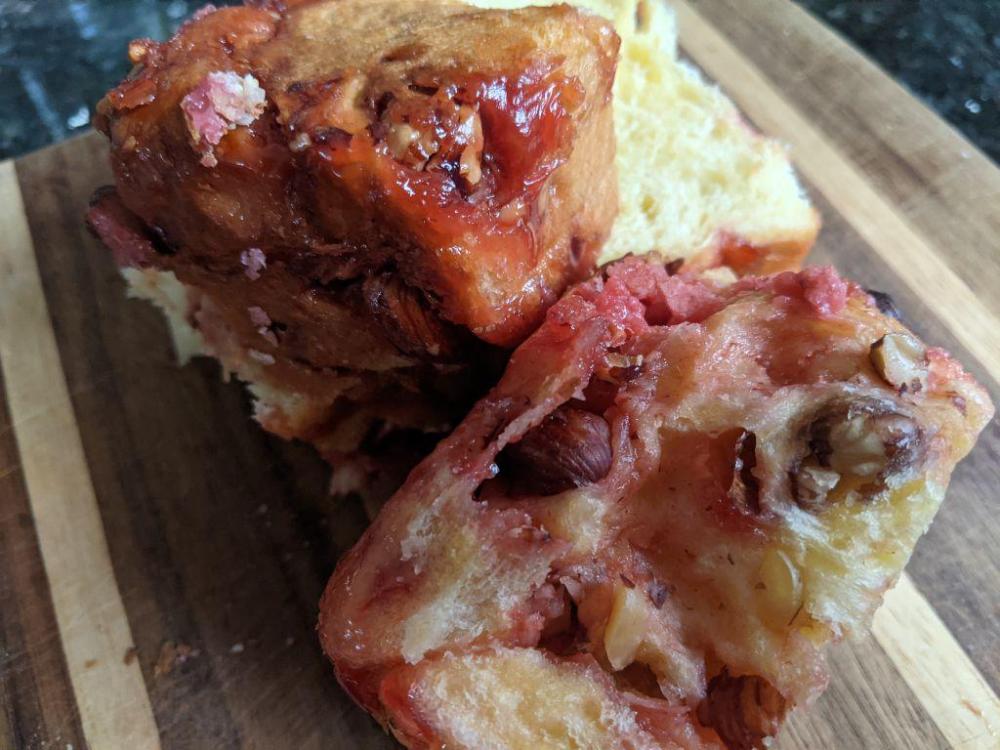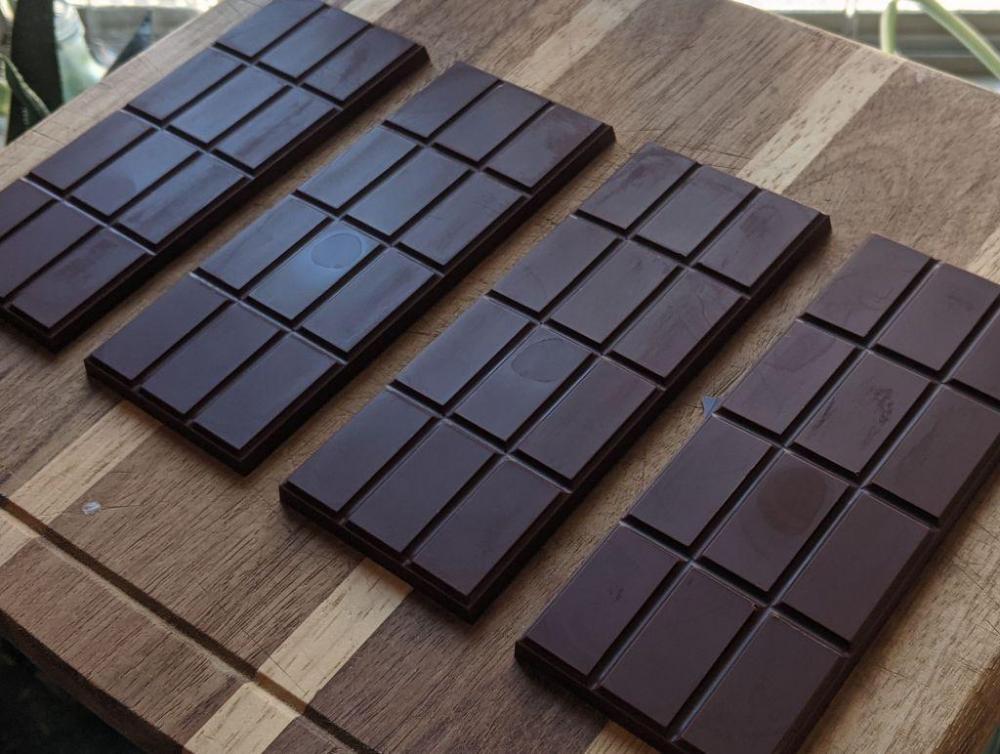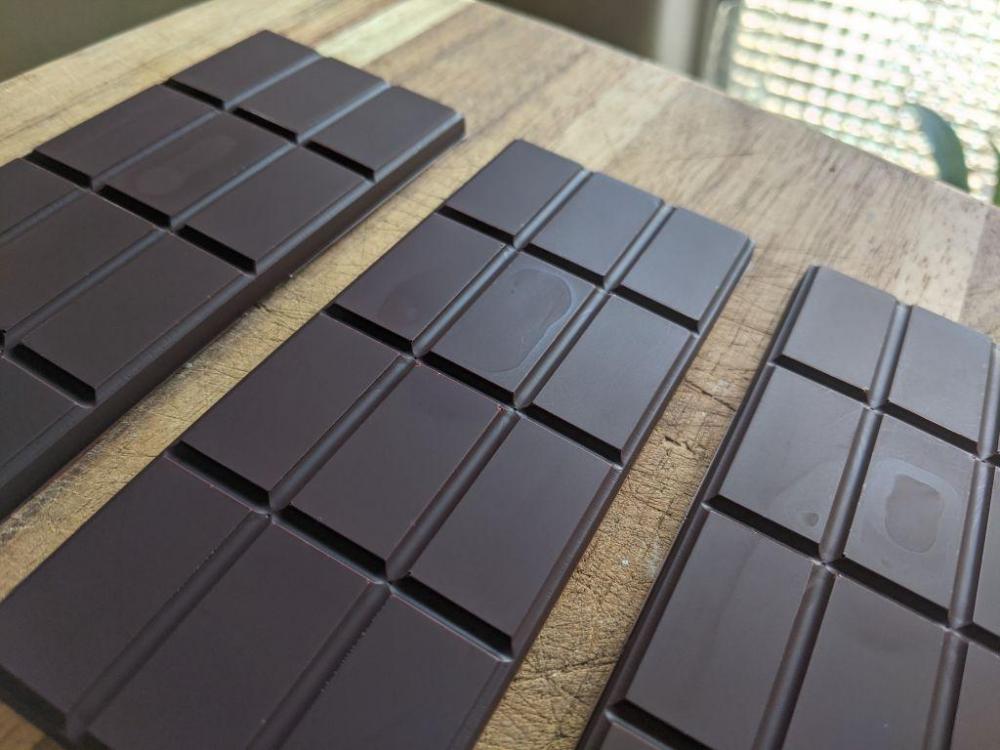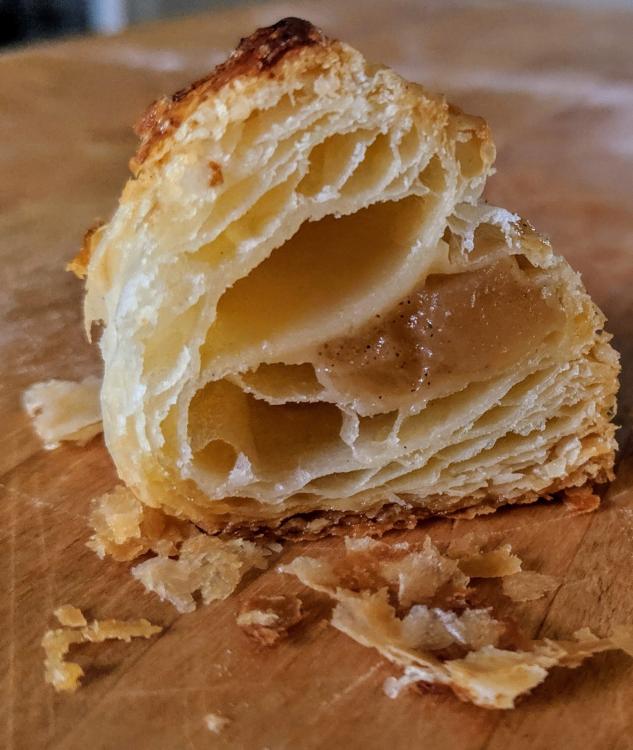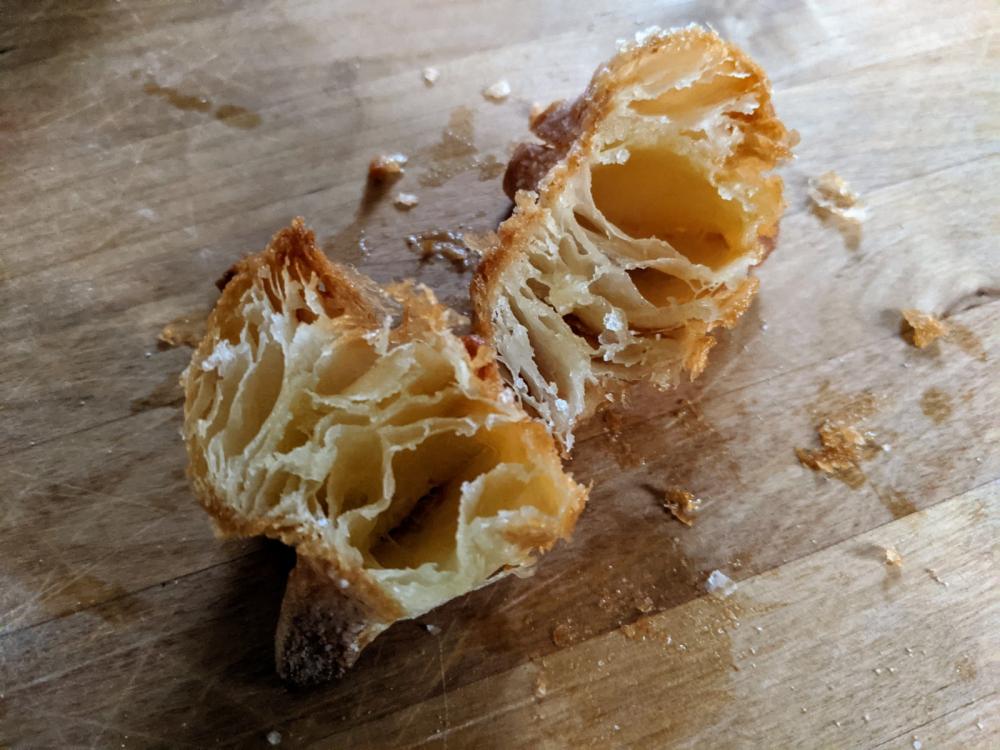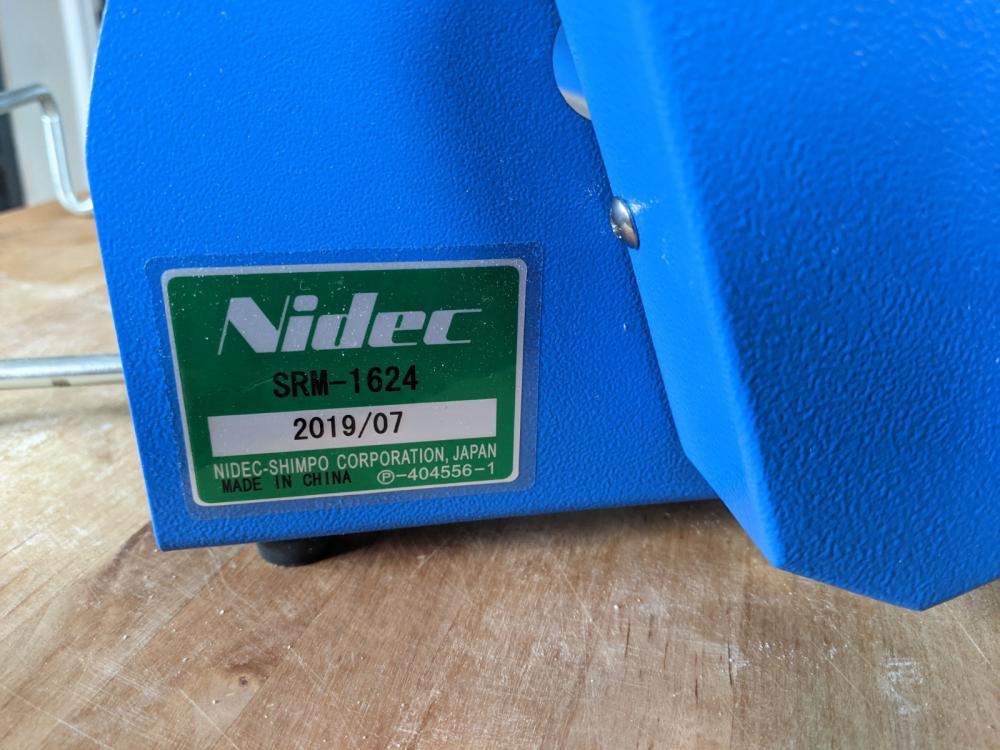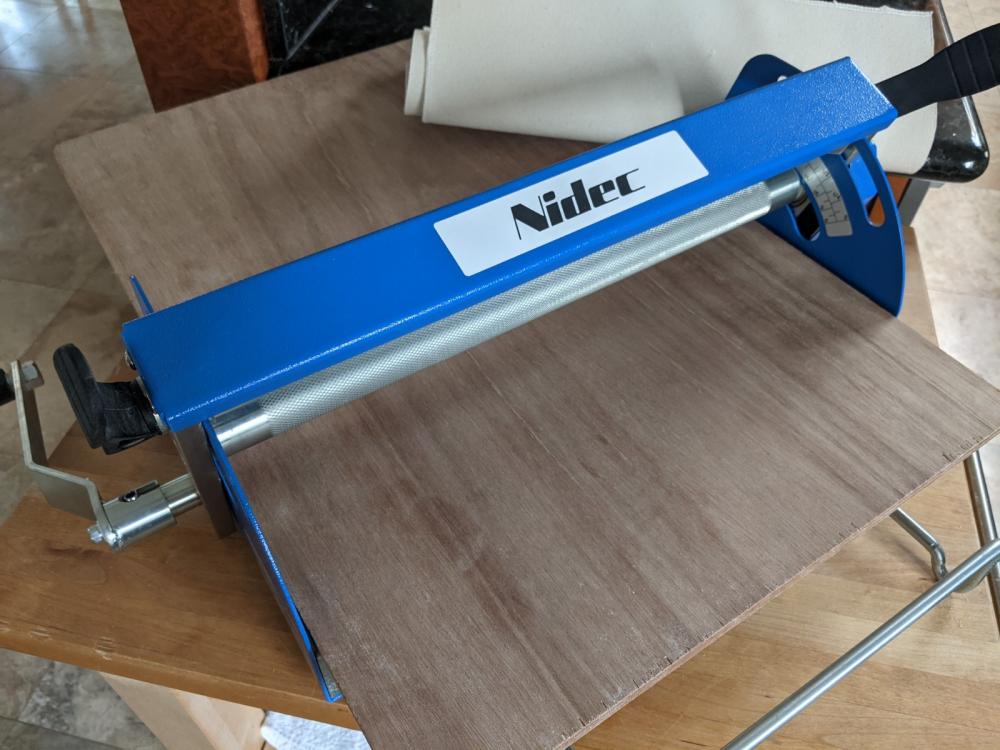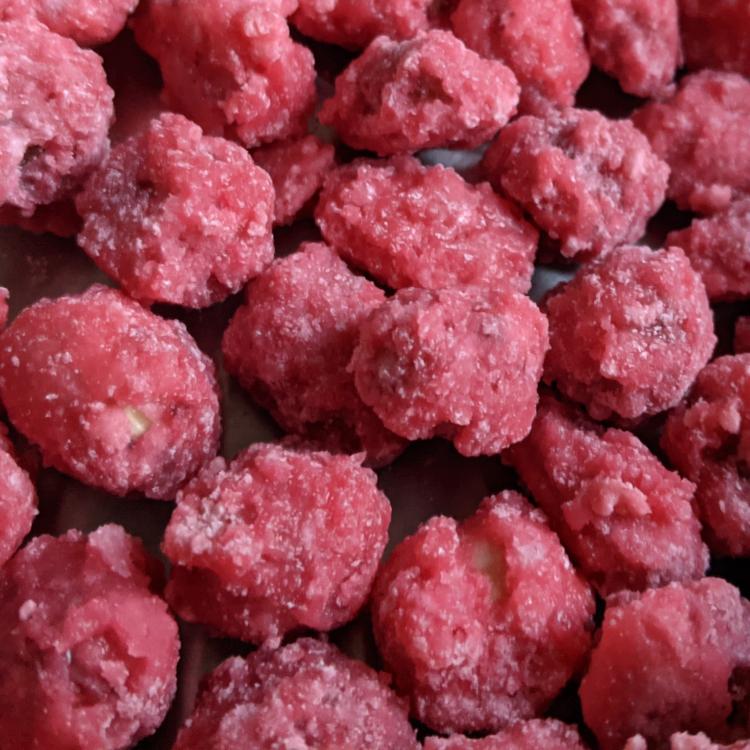
jedovaty
participating member-
Posts
444 -
Joined
-
Last visited
Content Type
Profiles
Forums
Store
Help Articles
Everything posted by jedovaty
-
I did a quick google and found this, has comments how to use agar without bringing to a boil, but, it still needs to be heated: https://www.chefsteps.com/ingredients/agar Has the recipe worked for you with a single batch?
-
I don't have enough experience with agar agar, I tried it a couple times in the past and recall the heating was required to activate, just like the various starches. I did not know gelatin would gel without being heated. If you try the gelatin, let us know how it works, I'm really curious! If you don't want to heat the thing, then maybe your best solution is to try the recipe as is, and if successful, make it in two separate batches. Good luck!
-
You probably can, but agar agar can be very finicky. I searched for agar pudding recipe and just kind of follow that to save what you have made - here's one I found, it even uses condensed milk. You can also use other thickeners like cornstarch or tapioca.
-
This recipe might not work if you are using ultra-pasteurized milk and cream.
-
Red food coloring questions, pink pralines/praline roses
jedovaty replied to a topic in Pastry & Baking
I've completed a few tests, just to wrap up any lose ends. Following the technique of that Bruno dude's video I linked to earlier in making these pralines (3 coatings in pan). 1. Shaking the pan a lot near the end causes more white peaks, but a smoother praline 2. After three sugar coatings, I cannot tell the difference between roasted and unroasted hazelnuts and almonds, and even less so once baked into the brioche 3. Skinning the nuts doesn't really do much in terms of flavor or mouthfeel 4. Both the vegan and bug options of tru-color held up in the oven with my sourdough brioche 5. To maintain color, I had to use the tru-color in each stage, 15-20 drops (2-3g I think?) 6. I added various amounts of glucose from 5g to 20g during each of the three stages and couldn't tell what it did, if anything 7. Need to add WAY more pralines into the brioche dough at the end, I was doing 50% by weight, and they just migrated to the edges during final proof, rather than remaining inside Picture shows tru-color food coloring before baking.. bugs on left, beets on right. In the pastry pic, I forgot which side was what, but, color clearly held up in both. Thanks for playing along and all the help in this thread Brioche in the picture looks a bit gooey and doesn't do it justice, I opened it before allowing it to cool, but was one of the softest and fluffiest I've made (almost ate the whole thing in one sitting oops). -
Nooo, it'll be a while before I try anything. I'm on vacation in toronto right now 😁, and it'll be a month or two before I make more chocolate. Both ideas will be challenging based on how I make chocolate. Dump/scrape a large amount is problematic because I make so little ~900g, i.e. I'll have to probably make a double batch which I'm willing to try. The piping method seems like it will be tricky keeping the chocolate at the temperature where it flows evenly, without getting lumpy. Not to mention extra messy, considering I'm already the world's clumsiest derp Will report back when I try one or both methods!
-
Had another thought. With my specific results, the big mark is always precisely where I first drop the molten chocolate. I'm just pouring a very steady 50g chocolate directly into each mold, since I work with at most 2lbs at a time, in order to minimize waste. You all think results would be different if I let the chocolate "drop" on another part of the mold, fill the whole thing up, then scrape off? I see the "pros" doing it this way, but again, I have such a small amount of chocolate, this method wouldn't work well with my lack of scraping experience (I suppose I could increase the amount of chocolate I make, but then, I want a roaster that can handle more).
-
JNW: your thread from a while back is where I learned of KB's recommendation to try different molds, and her experience with the tomrics. I found another thread, and here, the poster has tried chilling faster as well as waiting for crystallization before putting into the fridge. It seems a lot of others with the tomric molds are having this issue. I've let mine sit overnight in the fridge before, still got the marks. This may have to do with different chilling rates between the surface exposed to fridge/ambient air, and the part touching the plastic mold, which in the case of the tomric molds, could be exacerbated by the base having that air gap, thus creating a greater insulation in addition to that of the plastic. If this is partially or wholly to blame, then a very slow chilling would be better than a fast one, but, that will be a problem with using silk as a tempering. Add to that the theories of the larger surface area of these bar molds, and of course now it's clear this isn't really going to work. Wonder what makes the tomric molds more susceptible to this issue versus the other brands? Is it the shape of the base and the air cavity it creates? Maybe a different material? 5 years with these four molds, guess it's okay to now pick some up new ones in the interests of improving the end product. I started with using lids of reditainers, that was fun having a circular shaped mold, but a pain to wrap. I've always liked these thin break-away bars, easier to portion and share.
-
That search term brought up only three threads, this was one of them, however, it gave me a place to start and I found a few other suggestions, which include: - let sit at room temp until you see crystallization before putting into fridge - different molds I've just wrapped up my chocolate making, and will revist in a few months Thanks for the help!
-
I can't get rid of that shiny spot where the chocolate first hits the mold. Here's what I've tried: - super clean the mold - extra polish on mold with super soft microfiber cloth - more expensive, professional mold - two tempering methods (bowl over hot/cold water, silk) - bringing the mold to 90-95F Attached photo shows my typical result (photo with 4 bars) and the best results so far (photo with 3 bars). The best result came from the mold being at roughly 90F this time. The chocolate I make is from home-roasted beans, using a little cacao butter and sugar, no other ingredients. I usually do silk tempering right in the wet grinder, but have wanted to improve the "snap", so changed recently to pouring the contents into a bowl, heating to 130F for complete melting, then chilling to roughly 93-95F, adding grated silk, mixing like crazy, then pouring into the molds, smack on the counter rapidly several times, and into the fridge to chill quickly, ~30 minutes. I make chocolate in kitchen ambient range 60-75F, and humidity typically averages around 65%, although it can be as low as 40% or high as 80%, since I keep my windows open and live near the ocean. Can it get any better, or is this the best one can accomplish at home? I'm 5-6 years into this hobby and finally starting to tweak these finer points
-
Thanks KB, happy to know I was on the right track there. I'll post new thread later after one more test, although, I suspect the issue is still tempering related.
-
SOLD: Shimpo-Nidec mini slab-roller, $400, we split shipping
jedovaty replied to a topic in Culinary Classifieds
Sold locally to a home-pottery person Apparently these things are currently on backorder! -
Hi: I temper chocolate with homemade "silk". I've found I have to rapidly cool the chocolate to prevent blooming as well as loss of temper, i.e. put it in the fridge for 30-60 minutes. I'm using the fancy pricey GP-610 tomric molds, filling each bar with ~50g dark chocolate. Blooming always occurs if I let it set slowly at room temp, which ranges 60-75F. Does this sound right, or am I potentially doing something wrong? I'm asking this question to help me troubleshoot another issue (which I'll bring up later if needed, trying to figure things out on my own ;)) PS: fwiw, this is a hobby, I make a few bars every couple months for fun to taste varieties of cacao I roast. Not a commercial operation.
-
Hi! I purchased this Shimpo-Nidec mini slab roller to make my life easier with laminated doughs (before all the DIY and neato fancy ones started showing up on etsy), but, I'm just not using it enough and I need the space for my hobby. The Konbi restaurant in LA area uses this roller (it's orange though), check out all the videos for glimpses of it in action. I've had the Konbi pain au chocolat, and they are pretty darn tasty. They will source and sell it to you for about $1,500, although, you can get it new for $500-600 (I paid $529 for it). I'm asking $400 since it is used, but, I take very good care of my things. The unit came with a board and canvas specifically for clay, the wood board could make shipping tricky. If you want the board and canvas, I'll include them, but I'm not sure they are food safe. If you look through the konbi videos above, you'll see they are using a custom board of sorts. I did a little prelim work here, trying to decide whether to cut my own from wood or get a plastic cutting board but never pulled the trigger on anything, had other priorities at the time. I use the board with parchment paper and it was really annoying, the paper would slide around. Once over that aggravation, the resulting doughs were excellent and much more uniform than had I rolled them out by hand. If you are in southern california, I'm happy to meet you half-way and so I don't have to ship. I also make occasional trips to northern California bay area, and I have various conferences I attend for work in the second half of the year around the US, so I am always happy to drag it with me on the plane. I haven't figured out how to ship this thing yet.. I'll split it with you whatever it is. I really don't want to ship, so one of you in California buy this 😁 BTW, this thing works very well for inverse laminated doughs, not sure why but was so much easier than regular laminations which do take practice. Maybe it's because of the parchment paper. Here's a thread you can see my early attempts at croissant dough, having very little experience making these things. I've attached pics of my fronch apple thingies I made using inverse laminated dough and deep-fried left overs, very proud of the results! And yes, yes, one can do these by hand with a rolling pin or dowel quite well. Don't judge me. Let me know if you have any questions
-
Red food coloring questions, pink pralines/praline roses
jedovaty replied to a topic in Pastry & Baking
Their "liquid baking" product has carmine in it (the bugs!). I will get some, easier than making it myself, thank you for this -
Red food coloring questions, pink pralines/praline roses
jedovaty replied to a topic in Pastry & Baking
@minas6907That attachment is pricey, yikes. Converting the stand mixer doesn't seem too difficult. It's more difficult to commit to NOT doing it, everything in me wants to pursue the perfect pralines for the brioche, but I'm going to have to draw the line now. I think these would be good in ice cream, too. Taking a slight tangent, I tried two different brioche styles side by side: one more typical with milk, eggs, butter, and the other without milk with increased eggs and butter. It's so strange I could not tell the difference between the two in taste (single blind test), with only a slight color difference! Also, need to really load up on the pralines in the brioche, I thought I put in a lot but clearly not enough. -
Red food coloring questions, pink pralines/praline roses
jedovaty replied to a topic in Pastry & Baking
Considering these are destined for baking, so will melt a bit, doesn't seem like there's a need to pan them. You did make me curious so I will do a little research and see if there's an easy way to do this easily at home without many tools. My first thoughts are turning the stand mixer or my wet grinder into something like this. Meantime, I'll work on technique, too, I was not shaking pan much and that would probably help reduce the rockiness. The instructions in the video I linked to earlier talk about letting excess crystalized sugar remelt in the pan a little at the 2nd and 3rd coating stages. I did try this, and the bottom of the pan became glossy, but I couldn't get it to stick/coat the nuts anymore. Thanks all for the advices this was fun 😁 -
Red food coloring questions, pink pralines/praline roses
jedovaty replied to a topic in Pastry & Baking
@RWood Perfect, thank you! Here's my first try using the basic recipe to understand technique. I'll experiment later. Mix of almonds and hazelnuts, raw, with skin. Tastes like candy with a lot of sugar. I suspect removing skins will have little to no impact, and roasting the nuts may be too strong, but, we'll see Next batch only change will be some corn syrup (okay sub for glucose, right?) to see what happens to texture. Also, pan with taller sides. A fun thing to make, not overly difficult, just a generally clumsy nature means it is time to clean the kitchen 😭 -
Red food coloring questions, pink pralines/praline roses
jedovaty replied to a topic in Pastry & Baking
I did not know, and thank you for that! Dead bugs in my amazon order 😁 -
I fry mine on ghee or clarified butter. Makes them super amazing, especially if you push the fermentation as far as you can! I would be willing to try frying it on some duck fat, too, omg.
-
Red food coloring questions, pink pralines/praline roses
jedovaty replied to a topic in Pastry & Baking
Worst case scenario, grocery store by my house carries "McCormick Red" for $3.99. Yay. -
Red food coloring questions, pink pralines/praline roses
jedovaty replied to a topic in Pastry & Baking
@minas6907 Great, thanks! The bit about moisture absorption is most helpful, that actually makes sense now considering other confections I've had in the past. I'll report back with results, I think I'll try with standard food coloring first to make this easy then explore making my own from pulverized bugs later. It looks like finding food coloring for baking will need to be ordered online, the local arts/crafts stores only have stuff for icing, bummer. There's a culinary store near my sibling which carries the "Chefmaster" product line, but can't tell if it is heat stable. -
Red food coloring questions, pink pralines/praline roses
jedovaty replied to a topic in Pastry & Baking
Thank you, @minas6907, that's very helpful! Regarding your note on air drying, won't they get sticky if left in the air to dry? Sugar is hygroscopic from what I've seen, and seems to suck up moisture in the air. I live very close to the ocean, with relative humidity generally ranging 50-75%. I have one small non-stick pan, and two stainless steel pans. I'm assuming pan doesn't matter when making the pralines? I typically make dry caramel in the stainless, so, hopefully won't scorch anything. Should be fun -
I looked these up.. aren't they pretty much english muffins? I know there are various ways to make english muffins (some people use yogurt, I follow a variation of the Model Bakery recipe, etc), but it's pretty much fully proofed dough that is pan fried... ?
-
Red food coloring questions, pink pralines/praline roses
jedovaty replied to a topic in Pastry & Baking
Okay, well, thanks anyway, I appreciate the help 😁. I can't find any food coloring that uses the bugs, so, I'll just have to make it, and see how it turns out. Maybe I'll try the beetroot powder as well, who knows. I suppose this is all french. While researching, I learned the brioche Saint-Genix was the first, which is why I'm curious how they colored foods back then without red #40. Then some frenchman dude named Pralus repopularized it in the 1950s and trademarked it as the praluline. I'm debating whether to make the brioche all egg or milk + egg, I'm only made the latter but the former sounds intriguing. Here's the one my friend sent me that revealed the rabbit hole I fell into: https://www.chocolats-pralus.com/product/la-praluline-r-600g This Pralus dude's website also has the pink pralines for sale, where they list the ingredients in french. I ran that through google translate, and it looks like they use almonds, two kinds of hazelnuts, sugar, glucose, and red #40. Which now actually brings up a few questions just out of curiosity.. 1) what's the purpose of glucose here, maybe to make the candy smoother? 2) should I roast the hazelnuts first? and 3) remove skin from almonds and hazelnuts? I wish I had more time and space so I could test all these things out myself. Roasted hazelnuts taste so much better than raw, but I've never actually baked with them. It's also interesting this dude's pralines do not include the orange blossom or rose waters, that all the other online recipes use. Hmmm. And I just finished distilling some rose water since my citrus trees don't have any blooms right now. Phooey!


